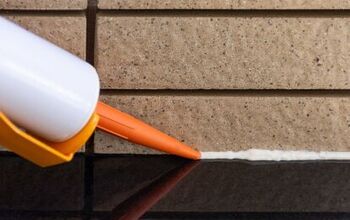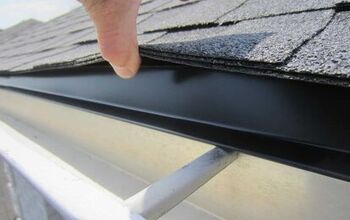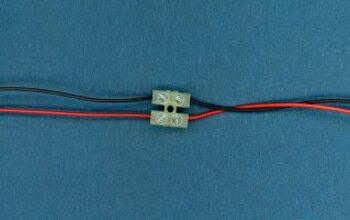Eight Pests That Come Inside During The Winter

It’s hard to get warm and cozy on a winter evening when you know you’re surrounded by bugs. However, that may be the case, even if you don’t see bugs at the moment. That’s because many insects and small mammals can easily come indoors during the winter.
Spiders, like brown recluses and wolf spiders, can come inside during the winter in search of insects, humidity, and warmth. You may also find stink bugs, silverfish, and cockroaches seeking food and shelter indoors. Small mammals, like raccoons and squirrels, can also come inside through vents and small openings. Mice are common winter pests, and they can crawl through ¼-inch gaps.
Luckily, you can easily get most pests out of your house during the winter. Follow along as we highlight common winter pests you may find inside and suggest ways to get rid of them.
Eight Pests That Move Inside During The Winter
Geography and climate are the only factors that determine what kind of pest will try to enter your home during the winter. Naturally, different towns and states have unique pests with unique diets and nesting habits. Most pests that come indoors during the winter are seeking food and shelter.
However, with some careful thinking, you can make your house uninhabitable to many unwanted pests. Otherwise, you may encounter several pests in your house this winter, such as:
1. Spiders
As if winter wasn’t already bad enough, now you must worry about spiders that will move indoors during the fall and winter in search of food, warmth, and shelter. The type of spiders you’ll find in your home during the winter depends on where you live. For example, you may find brown recluse spiders in your home during the winter if you live in Illinois. However, you may find cellar spiders and wolf spiders in your New York home this winter. Spiders can easily enter your home through door gaps and cracks in the siding and windows.
You won’t find as many spiders in your home if you maintain a humidity level below 50%. Get your home sprayed with insecticides to kill the bugs that spiders feed on. That way, you can remove the food source and eventually get rid of the spiders.
2. Mice
While mice are often harmless, they can carry diseases and make nasty messes. That’s why you should do everything possible to keep them out of your house during the winter. The problem is that mice can squeeze through extremely small gaps and cracks in your home's doors and walls.
Mice are motivated by food and warmth, and they know that your home has both of those things. They can squeeze through ¼”-inchopenings, so keeping them out of the house is difficult. Ideally, you should keep all traces of food far away from your garage and entry doors.
That includes your dog and cat food bowls, which mice can smell from far away. Patch and seal all the gaps in your walls and put weatherstripping at the bottom of your doors. If all else fails, call an exterminator to take care of your mouse problem.
3. Stink Bugs
Have you wondered why stink bugs keep coming inside each fall and winter? They come inside for the same reason as any other pest, which is to find food and shelter. That said, stink bugs aren’t as interested in warmth as other winter pests are, like spiders. Instead, they’re looking for a safe, dry location, and they typically stay pretty dormant during the winter.
Unfortunately, stink bugs release pheromones that attract other stink bugs, which can make your problem worse. You can deter stink bugs with essential oils containing peppermint and lavender, or you can spray garlic on the ground. Otherwise, you can scatter some diatomaceous earth on the ground to deter stink bugs and other pests. The only problem is that diatomaceous earth can create a powdery mess in your home. That said, it’s better than dealing with a constant barrage of stink bugs.
4. Cockroaches
If you’re unlucky enough to live in an area with roaches, you'll probably dread finding them indoors this winter. While roaches are quite durable, they still tend to migrate indoors during the fall and winter. Not only does this keep them warm, but they also know they can find food in your house.
Roaches will eat nearly anything, including food crumbs, pet food, dead bugs, meat, and anything with starch or sugar. That makes your kitchen a dream vacation spot for your local roach population. They will linger in your kitchen if it’s messy, especially if they find grease.
You must install weatherstripping and seal the gaps in your exterior walls to keep cockroaches out of your house. It also helps to put diatomaceous earth around the perimeter of your house, both inside and outside. You can also deter and even kill cockroaches with boric acid.
5. Bats
The thought of bats flying around your house is likely to make you feel uneasy. Unfortunately, it may become a reality if you live in an area that’s densely populated with bats. Some bats migrate during the winter, whereas others hibernate during the winter. Bats eat small insects, which naturally go away and become dormant when it gets very cold and snowy. However, many flying insects enter homes as a desperate attempt at finding food, shelter, and warmth. This explains why so many people find bats in their homes during the winter.
If a bat accidentally enters your home when its confused, it may stay when it finds a steady food source. If you find a bat in your house, quickly close the door, leave the room, and call a wildlife removal service. Keep your chimney damper closed to ensure bats can’t easily enter your home.
6. Raccoons And Squirrels
For this list, we are lumping raccoons and squirrels together. That’s because both of these small mammals enter houses for the same reasons and in the same ways during the winter. If a raccoon can enter your home, that means a squirrel can come inside much more easily.
Small mammals crave warmth and in many cases, have nowhere to go during the winter. That’s especially true in heavily developed areas that once had plenty of natural shelters. Raccoons and squirrels often enter homes through the attic, but they can come in through any gap. They can also come in through exterior vents, crawlspaces, and chimneys. It helps to trim the trees around your house, so mammals can’t easily access your roof vent. Otherwise, you must simply spend the time and money to seal all entry points.
7. Silverfish
Silverfish are attracted to warmth, humidity, food, and shelter. The more humid your house is, the more likely you are to find silverfish inside your home this winter. Once your humidity goes above 50% to 60%, you’re probably going to find silverfish inside.
They eat everything from magazines and wallpaper to fruit and dead bugs, so they aren’t picky. You’ll especially find them in your laundry room, basement, and bathrooms during the winter. Ideally, you should deep-clean your house and get rid of a lot of the paper waste you have. Run a dehumidifier and set it to stay below 50% humidity to deter silverfish. You can also trap and kill silverfish using glue traps, but you must place them carefully. Don’t put the glue traps anywhere within reach of your pets and or small children.
8. Ants
In a perfect world, nobody would have to think about ants after the summer ends. Sadly, certain types of ants, like odorous house ants and pavement ants, go inside during the winter. That’s especially true early in the season before it gets too cold.
Luckily, most ants become dormant when it gets too cold, but they have plenty of time to go indoors before then. They won’t likely lay eggs during the winter, but they may still walk around your home searching for food. Unfortunately, your home probably has plenty of food, whether it be food crumbs or fresh fruit. Dilute some distilled white vinegar in a bottle with water and spray the perimeter of your home’s interior walls. This is a great way to deter ants without using dangerous insecticides.
Summing It Up
Spiders, mice, raccoons, and squirrels can come inside during the winter in search of warmth, food, and water. You may also find common bugs, like silverfish, ants, and stink bugs, inside during the winter. Luckily, you can deter most winter pests if you install weatherstripping and seal the gaps and cracks in your walls and windows.
Related Guides:

Nick Durante is a professional writer with a primary focus on home improvement. When he is not writing about home improvement or taking on projects around the house, he likes to read and create art. He is always looking towards the newest trends in home improvement.
More by Nick Durante



























